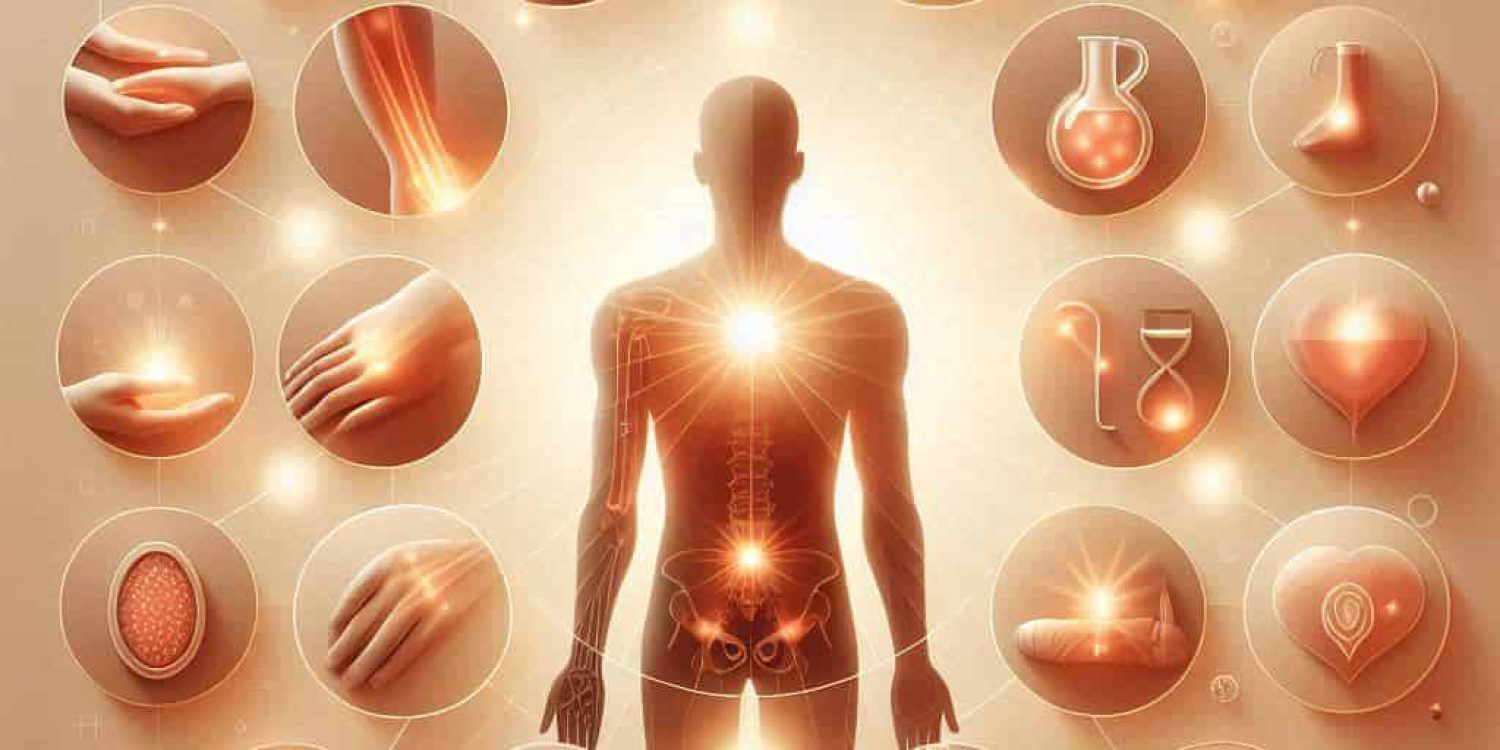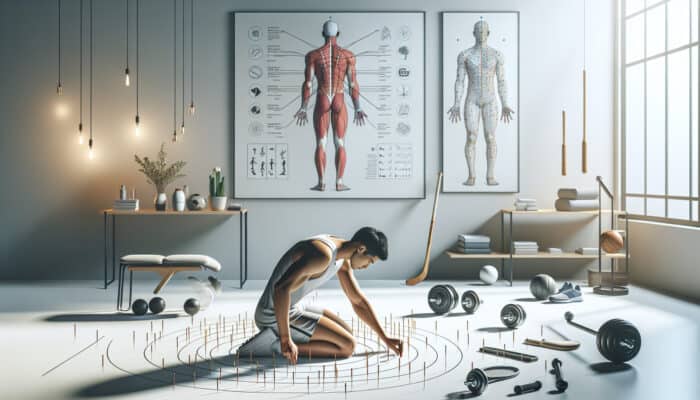Unlock the Healing Benefits of Infrared Light Therapy
The fascinating journey of infrared light therapy began in the late 19th century when pioneers in science embarked on a quest to uncover light’s therapeutic potential. Sir William Herschel’s groundbreaking discovery of infrared radiation in 1800 opened a new realm in understanding the electromagnetic spectrum. His experiments revealed that light exists beyond the visible spectrum and can generate heat, a revelation that would lay the groundwork for numerous medical applications.
This foundational knowledge fueled further research into light’s healing properties, especially in medicine. By the early 20th century, medical professionals were experimenting with various types of light therapy, such as ultraviolet and infrared light, to address different ailments, from skin disorders to musculoskeletal issues. As the century progressed, infrared therapy began to garner attention within the medical community, particularly during the post-World War II era, a time marked by technological advancements that enabled more sophisticated treatment methods.
The invention of infrared lamps and other therapeutic devices made it easier for healthcare practitioners to harness the numerous benefits of this innovative treatment. By the 1970s and 1980s, scientific research began to validate the effectiveness of infrared light in promoting healing and alleviating pain. This era witnessed a surge in clinical studies exploring infrared therapy’s diverse applications, leading to its broader acceptance in traditional and alternative medicine circles.
Today, infrared light therapy is celebrated for its rich historical roots and contemporary relevance in holistic health practices. It offers a safe and effective way to enhance well-being.
Key Takeaways on Infrared Light Therapy
- Infrared light therapy has a long history. Ancient civilizations, including the Greeks and Egyptians, utilized sunlight for healing.
- This therapy works by penetrating the skin to increase circulation, promoting healing and effectively reducing inflammation.
- Some significant benefits include pain relief, enhanced circulation, and accelerated healing for wounds and injuries.
- Conditions that benefit from infrared therapy include arthritis, muscle pain, and various skin ailments, such as acne and eczema.
- Available infrared light therapy devices vary from handheld options to full-body panels, making them accessible for at-home use.
- Safety measures include avoiding direct exposure to the eyes and consulting healthcare professionals, especially for individuals with specific medical conditions.
- Incorporating infrared therapy into your wellness routine can be seamless, whether through a handheld device for targeted relief or a full-body panel during relaxation sessions.
 Understanding the Mechanisms of Infrared Therapy
Understanding the Mechanisms of Infrared Therapy
Infrared light therapy operates on the principle that specific light wavelengths can penetrate the skin and activate essential cellular processes. When infrared light is applied to the body, it is absorbed by the skin and the underlying tissues, increasing temperature. This temperature elevation promotes vasodilation, enhancing blood flow and oxygen delivery to the targeted areas, which is crucial for effective healing.
The increase in circulation facilitates the removal of metabolic waste products while accelerating the healing process. Moreover, infrared light has been shown to stimulate adenosine triphosphate (ATP) production, the vital energy molecule within cells. This boost in cellular metabolism significantly contributes to tissue repair. Additionally, the mechanism behind infrared therapy is closely tied to its interaction with mitochondria, which are the cell’s energy powerhouses.
Exposure to infrared wavelengths enhances mitochondrial efficiency in ATP production, which is vital for cellular function and regeneration. This process aids in healing and pain relief by reducing inflammation and fostering muscle relaxation. Furthermore, infrared therapy can modulate the immune response, alleviating symptoms associated with various inflammatory conditions. Therefore, infrared light therapy is an active, engaging treatment that interacts with biological systems to support overall health and well-being.
Exploring the Extensive Benefits of Infrared Light Therapy
The extensive benefits of infrared light therapy make it an attractive option for individuals seeking alternative or complementary treatment methods. One of its most remarkable advantages is its ability to provide substantial pain relief. Users frequently report significant reductions in chronic pain conditions, including arthritis, fibromyalgia, and lower back pain, following infrared therapy sessions.
The soothing warmth generated by the infrared light penetrates deep into tissues, offering immediate relief and promoting relaxation. This characteristic benefits individuals suffering from muscle tension or stiffness, easing discomfort and enhancing mobility. Beyond pain alleviation, infrared therapy also positively impacts skin health.
Infrared therapy can enhance skin tone and texture by stimulating collagen production through improved blood circulation. Many individuals have embraced this therapy as a non-invasive solution for treating conditions like acne, eczema, and psoriasis. Additionally, infrared light therapy has demonstrated its capacity to expedite wound healing by promoting tissue regeneration and minimizing scarring. Consequently, numerous skincare professionals have begun incorporating infrared therapy into their treatment protocols, acknowledging its ability to enhance aesthetic outcomes while addressing underlying skin concerns.
Diverse Conditions Addressed by Infrared Therapy
Infrared light therapy has proven effective in treating many conditions, showcasing its versatility as a therapeutic approach. A prominent application lies in managing musculoskeletal disorders. Conditions such as arthritis, tendonitis, and sports injuries often respond favourably to infrared therapy due to its anti-inflammatory properties and capacity to promote healing in soft tissues.
Patients experiencing chronic pain syndromes frequently report significant symptom improvement after engaging in regular infrared therapy sessions, highlighting its efficacy as a non-pharmacological pain management solution. Additionally, infrared therapy has shown promise in treating various dermatological concerns. Skin issues such as acne and rosacea can significantly benefit from infrared light’s anti-inflammatory properties, which help calm irritated skin and diminish redness.
Moreover, its ability to stimulate collagen production renders it an appealing option for those seeking anti-ageing treatments or scar reduction. Emerging research also suggests that infrared therapy may offer applications for more complex conditions, such as neuropathy and circulatory disorders. This indicates that the therapeutic reach of infrared therapy continues to broaden as ongoing studies yield new insights into its benefits.
 Choosing the Right Infrared Therapy Devices
Choosing the Right Infrared Therapy Devices
The market for infrared light therapy devices has expanded dramatically in recent years, reflecting a growing interest in at-home wellness solutions. These devices range from handheld units designed for targeted treatment to larger panels that can cover extensive areas of the body. Handheld devices are favoured for their convenience and portability, enabling users to focus on specific problem areas, such as joints or muscles, without needing professional intervention.
Many of these devices utilize near-infrared wavelengths, renowned for their deep tissue penetration capabilities. On a broader scale, full-body infrared saunas have gained popularity as holistic wellness tools that blend relaxation with therapeutic benefits. These saunas employ far-infrared technology to warm the body from within, promoting detoxification through sweating while simultaneously alleviating muscle tension and stress.
As technology advances, innovations enhance these devices’ effectiveness and user experience. For instance, contemporary units may include timers, adjustable intensity settings, and Bluetooth connectivity for guided sessions or music integration. This evolution in design not only makes infrared therapy more accessible but also encourages individuals to incorporate it seamlessly into their daily routines.
Safety Guidelines and Considerations for Infrared Therapy
While infrared light therapy is widely considered safe for most individuals, important considerations must be considered before commencing treatment. Consulting with healthcare professionals is essential, especially for those with pre-existing medical conditions or pregnant individuals. Certain conditions may contraindicate the use of infrared therapy; for example, individuals with photosensitivity or those taking medications that increase light sensitivity should exercise caution.
Although rare, some users may experience mild side effects such as skin irritation or temporary redness post-treatment. Another crucial aspect is ensuring that the devices utilized for infrared therapy meet high-quality standards and comply with safety regulations. Consumers should seek reputable brands that provide clear usage instructions and safety precautions.
It is advisable to start with shorter sessions at lower intensities before gradually increasing exposure time as tolerated. By considering these precautions, individuals can maximize the benefits of infrared therapy while minimizing potential risks associated with its use.
 Integrating Infrared Therapy into Your Holistic Wellness Routine
Integrating Infrared Therapy into Your Holistic Wellness Routine
Incorporating infrared light therapy into a wellness routine can significantly enhance the overall health experience for many individuals pursuing holistic health solutions. A consistent schedule is vital; regular sessions amplify cumulative benefits over time. Whether opting for professional treatments or employing at-home devices, dedicating specific time for therapy fosters a sense of mindfulness and self-care that complements other wellness practices, such as yoga or meditation.
Furthermore, pairing infrared therapy with complementary modalities can amplify its effects. For example, integrating stretching or gentle exercise before or after a session can optimize muscle relaxation and enhance overall flexibility. Staying adequately hydrated before and after treatment is also crucial, mainly when using full-body saunas that induce sweating.
By thoughtfully incorporating infrared therapy into a broader wellness framework encompassing nutrition, physical activity, and mental well-being practices, individuals can cultivate a holistic approach to supporting their health goals and improving their quality of life.
Your Frequently Asked Questions about Infrared Therapy
What is infrared light therapy, and how does it work?
Infrared light therapy, often called low-level light therapy or photobiomodulation, employs specific light wavelengths to foster healing and alleviate pain. This non-invasive- treatment stimulates cellular processes to promote recovery in various medical and cosmetic applications.
What mechanisms enable infrared therapy to promote healing?
Infrared therapy enhances cellular energy production by stimulating mitochondria within cells. This increase in energy can facilitate tissue repair, decrease inflammation, and boost circulation. The specific wavelengths of light used in infrared therapy are believed to exert therapeutic effects on the body’s biological systems.
What advantages does infrared light therapy offer?
Some potential benefits of infrared therapy include pain relief, improved circulation, reduced inflammation, expedited wound healing, and enhanced skin tone and texture. It also effectively treats conditions like arthritis, muscle and joint pain, and skin issues like acne and eczema.
Is infrared light therapy safe for everyone?
Infrared light therapy is generally deemed safe when utilized according to guidelines. As a non-invasive procedure that does not involve UV radiation, it poses a low-risk treatment option. However, adhering to instructions provided by a healthcare professional or the device manufacturer is crucial for optimal safety.
What health conditions can infrared light therapy effectively treat?
Infrared light therapy can address various conditions, including musculoskeletal pain, arthritis, sports injuries, skin ailments, and wound healing. It is also widely applied in cosmetic treatments for skin rejuvenation and anti-ageing.
How is infrared light therapy typically administered?
Infrared light therapy can be conducted using handheld devices, light panels, or specialized therapy beds. Treatment typically involves exposing the targeted area to specific light wavelengths for a designated period, ranging from a few minutes to half an hour, with treatment frequency and duration varying based on the condition being addressed.
























39 Comments
Your exploration of the history of infrared light therapy is both intriguing and enlightening. It’s fascinating to consider how a scientific discovery from 1800 has shaped various fields in medicine and therapy. The late 19th and early 20th centuries were such pivotal times in our understanding of light and its effects on the body. I can’t help but draw parallels to other complementary therapies that have roots in early scientific exploration, like acupuncture or even the use of essential oils—each reflecting a growing curiosity about the intersection of nature, science, and health.
I really appreciate your thoughts on the history of infrared light therapy. The connections you draw between it and other complementary therapies like acupuncture or essential oils show just how rich and layered our understanding of health really is. It’s striking to see how scientific curiosity in the 19th century laid down the groundwork for so many practices that people engage with today.
It’s really interesting to think about how far infrared light therapy has come since its early beginnings. The historical context you provided serves as a great reminder of how intuitive ideas about light and health can lead to practical applications that transform modern medicine. I often think about how in our current era, we tend to overlook the natural healing powers that have been recognized for centuries. It’s incredible that something as simple as light can play such a significant role in wellness.
The evolution of infrared light therapy is a fascinating journey, particularly when you consider how our relationship with natural elements has changed over time. In a world increasingly dominated by quick fixes and pharmaceutical solutions, it’s refreshing to revisit those simpler, more intuitive ideas of health and wellness.
“Explore the truth behind the hype—discover insights that challenge the status quo.”
https://mcrtherapies.co.uk/ezi
You’ve touched on a fascinating point about the relationship between light and health. It’s easy to get caught up in the rapid pace of technological advancement and forget the wisdom gleaned from centuries of natural healing practices. Infrared light therapy, with its roots in both ancient beliefs and scientific inquiry, really highlights how our perception of health and wellness is evolving.
You’ve touched on a fascinating point about the relationship between light and health. It reminds me of how intertwined our understanding of wellness has become with both traditional practices and modern technologies. There’s something truly profound about the way ancient cultures used natural elements for healing, and it feels like there’s a resurgence in interest for those methods today.
You’ve really captured the essence of that connection between light and health. It seems to me that this interest in natural healing methods is a response to our fast-paced, often artificial lifestyles. I often think about how many of us spend our days indoors, under fluorescent lights, and how disconnected that feels from our ancestors who relied so heavily on sunlight and nature for their well-being.
You make a great point about the balance between technological advancements and the wisdom of traditional healing practices. It’s intriguing how we often overlook what has been known for centuries in pursuit of the latest gadget or trend. Infrared light therapy is an excellent example because it marries ancient understanding with modern science.
You highlight a really fascinating aspect of this dialogue, and it’s something I often find myself thinking about too. The way we sometimes chase the shiny new tech while brushing aside age-old wisdom feels a bit like trying to reinvent the wheel in so many areas of life. Infrared light therapy is a great case study in how these two worlds can intersect effectively.
You’ve brought up an interesting perspective. The intersection of ancient healing practices and modern technology does create a unique dialogue about health and wellness. Infrared light therapy, for instance, is a great example of how we can harness something like light, which has been a part of various cultural treatments for centuries, and apply a scientific lens to it now.
It’s interesting how red light therapy not only draws on ancient wisdom but also aligns with our growing understanding of modern health, making it a compelling option for back pain relief.
‘Back Pain Relief With Red Light Therapy’
https://mcrtherapies.co.uk/back-pain-relief-with-red-light-therapy/.
I really appreciate your perspective on the blending of ancient practices and modern technology. It’s fascinating how many contemporary therapies can trace their roots back to traditional healing methods. Light therapy, in particular, feels like one of those concepts that has truly come full circle. It’s remarkable to think about how cultures throughout history have used the sun and other forms of light not just for physical healing, but also for emotional and spiritual well-being.
You’ve touched on such an important point. The journey of infrared light therapy really highlights how our understanding of health has evolved—often blending ancient wisdom with modern science. It’s intriguing to think about how societies throughout history have sought connections between nature and healing, and yet here we are today, rediscovering those principles with a contemporary twist.
“I completely agree! If you’re curious to explore more about the benefits of infrared light therapy and how it can enhance your wellness journey, check out this insightful resource.”
https://mcrtherapies.co.uk/ig
Your exploration of the history and evolution of infrared light therapy is deeply insightful and sheds light on a fascinating intersection of science and wellness. I find it particularly compelling how the early 19th-century discoveries laid the groundwork for treatments that many of us now take for granted.
It’s fascinating, isn’t it? The way early discoveries in the 19th century continue to influence our understanding of health and wellness today feels like a testament to the perseverance of scientific inquiry. What strikes me most is how these earlier scientists, working with limited technology, managed to uncover principles that we’re still uncovering new applications for today.
It’s great to hear that you found the history of infrared light therapy intriguing. It’s amazing how early scientists were really just scratching the surface of what light could do for our well-being. In that era, they were working without the high-tech equipment we have today, which makes their empirical insights even more interesting.
It’s fascinating to think about how the journey of infrared light therapy has evolved from Sir William Herschel’s groundbreaking discovery over two centuries ago. The healing properties of light are not just a scientific curiosity; they serve as a powerful reminder of our innate connection to the natural world.
You’ve hit on something really intriguing about Herschel’s discovery. It’s amazing how something that started as a scientific exploration has opened up a whole field of healing practices that many people are now embracing. It brings to mind how light has played such a vital role in various cultures—think of sun worship or using candles in meditation.
It really is fascinating how Herschel’s discovery has morphed into something much larger than its original scientific intent. The interplay between light and well-being seems timeless, with cultures long recognizing its significance. I think about how, in many traditions, light symbolizes hope and renewal—like in the Festival of Lights in various religions or the use of light in practices like aromatherapy.
It’s interesting how the concept of light really weaves into so many aspects of our lives, isn’t it? You mentioned the Festival of Lights, and it made me think about how diverse and ubiquitous the themes of hope and renewal are across cultures and practices. In many ways, light acts as a bridge between the tangible and the abstract—something that people can see and experience, yet carries such profound meaning.
It’s interesting how the healing practices we explore today, like cupping, weave together tradition and well-being, much like the ways light has long represented renewal across cultures.
‘Cupping Therapies – Unveiling The Mysteries’
https://mcrtherapies.co.uk/cupping-therapies-unveiling-the-mysteries/.
You’re spot on about the symbolism of light and its widespread implications across different cultures. It’s true; light often represents hope and renewal, creating connections that transcend language and culture.
You’ve hit the nail on the head with that observation about light being both tangible and abstract. It’s like the universe’s way of shining a flashlight on the things we hold dear, whispering reminders of hope and renewal. Plus, who doesn’t love a good metaphor about something glowing in the darkness?
Absolutely, the symbolism of light and healing practices like cupping truly reflect our shared human experience. If you’re curious to explore further how these traditions intertwine, check out this insightful piece on cupping therapies for a deeper understanding: [Cupping Therapies – Unveiling The Mysteries](https://mcrtherapies.co.uk/cupping-therapies-unveiling-the-mysteries/).
https://mcrtherapies.co.uk/ezi
It really is fascinating, isn’t it? Sir William Herschel’s discovery of infrared light opened up so many avenues in understanding how light interacts with our bodies. It’s intriguing to consider how our ancestors may have used natural sunlight for healing long before we had the science to back it up.
You raise an interesting point about the connection between the discovery of infrared light and its healing properties. It’s true that Sir William Herschel’s findings sparked a journey that transcends mere scientific curiosity. But somewhere along the line, the narrative around light therapy has been romanticized, often overshadowing some critical facets of its evolution.
“Exploring the wonders of infrared light therapy further can deepen our appreciation for this incredible connection—discover more about its benefits here.”
https://mcrtherapies.co.uk/ezi
The history of infrared light therapy that you detail so beautifully brings to mind the profound connection between innovation, curiosity, and human health. The journey from Sir William Herschel’s initial discovery to modern applications is truly inspiring, as it highlights how far science can take us when we remain open to exploring the unknown.
You’re touching on something really fascinating. The connection between curiosity and innovation is at the heart of so many advancements in science. When we look back at history, it’s striking how one discovery can lead to another, often in unexpected ways. Sir William Herschel’s finding, for example, wasn’t just about evaluating heat but opened a door to realms we might not have considered at the time.
It’s truly fascinating to consider how far infrared light therapy has come since Sir William Herschel’s discovery. The intersection of science and medicine has always intrigued me, particularly how such foundational research can lead to tangible health benefits today. I recently read a study indicating that infrared therapy can improve circulation and reduce inflammation, which sounds promising for athletes or anyone dealing with chronic pain.
The historical context you’ve provided for infrared light therapy is truly intriguing and highlights the blend of curiosity and innovation that drives medical advancements. It strikes me that the trajectory of this therapy mirrors broader trends in health and wellness, particularly the growing emphasis on non-invasive and complementary approaches.
The history of infrared light therapy is truly captivating, especially when considering its progression from Sir William Herschel’s early experiments to its modern applications in health and wellness. It’s intriguing how this discovery not only revolutionized our understanding of light but also laid a foundation for therapies that many people rely on today.
It’s fascinating to think about how Sir William Herschel’s curiosity about light paved the way for innovations we often take for granted today. His experiments were such a leap in understanding the electromagnetic spectrum, and it’s almost poetic how a simple exploration of invisible wavelengths led to significant advancements in health.
This is a fascinating exploration of the history and potential of infrared light therapy! It’s incredible to consider how the understanding of light has evolved and its transformative impact on wellness. Personally, I’ve experienced the soothing effects of infrared saunas and can attest to their ability to promote relaxation and recovery.
It’s fascinating to read about the historical context surrounding infrared light therapy and how it emerged from the scientific exploration of light in the 19th century. The journey from Sir William Herschel’s discovery to its applications in modern medicine highlights not only the ingenuity of early scientists but also the evolving understanding of how we can harness natural phenomena for healing.
It’s great to see how much you appreciate the historical backdrop of infrared light therapy. When you think about how Sir William Herschel stumbled upon infrared light back in the 1800s, it’s astonishing to consider how a simple experiment with a prism led to something that interacts so deeply with human health today. This kind of experimentation reminds us that breakthroughs often emerge from curiosity and a willingness to explore the unknown, doesn’t it?
It’s intriguing to consider how far our understanding of light’s therapeutic benefits has come since Herschel’s groundbreaking discovery. I wonder how the evolution of technology continues to shape our approach to healing. Infrared light therapy seems like a beautiful marriage of science and holistic health.
It’s fascinating to think about how the discovery of infrared radiation has evolved into such a versatile therapeutic tool today! I’ve personally experienced the benefits of infrared light therapy for muscle recovery after workouts, and I find it remarkable how something as simple as light can influence healing.
It’s fascinating to see how infrared light therapy evolved from those early discoveries! I’ve recently tried it for some muscle soreness, and it felt surprisingly soothing. It makes me think about how often we overlook light as a healing tool.
The historical journey of infrared light therapy presented in your post truly highlights the remarkable intersection of science and healing. It’s fascinating to reflect on how a discovery made centuries ago still informs and shapes modern medical practices. Sir William Herschel’s work not only unlocked a new spectrum of light but also opened the door for innovative therapeutic possibilities that continue to influence our understanding of health and wellness today.
It’s interesting to think about how Herschel’s discovery really kick-started a whole new field of exploration. It’s kind of mind-boggling how something as simple as light can have such profound effects on health. Today, we’re just scratching the surface of what infrared light therapy can do, whether it’s for pain relief or promoting healing.
“I’m glad you found the historical journey of infrared light therapy intriguing! If you’re interested in exploring how this transformative therapy can enhance your well-being, check out this resource for more information.”
https://mcrtherapies.co.uk/ig
It’s intriguing to reflect on how Herschel’s discovery opened up an entirely new avenue in both science and wellness. The relationship between light and healing truly seems to defy our expectations, doesn’t it? The more I learn about infrared light therapy, the more fascinated I become with its potential, especially for holistic health practices.
You make a great point about the lasting impact of Herschel’s discovery. It’s interesting to consider how our understanding of light has evolved since then. While it’s easy to celebrate the innovative therapies that stem from his work, it’s also worth noting that our relationship with these technologies isn’t always straightforward. There’s a fine line between enthusiasm for new treatments and the necessary skepticism about their efficacy. In a world where wellness trends often overshadow science, asking critical questions remains vital. How do we balance historical insights with the need for rigorous, contemporary studies? The journey is as much about discovery as it is about ensuring that what we adopt is truly beneficial.
I’m glad you found the journey of infrared light therapy intriguing! If you’re interested in exploring how these insights can enhance your wellness journey, check out this resource for more information.
https://mcrtherapies.co.uk/fb